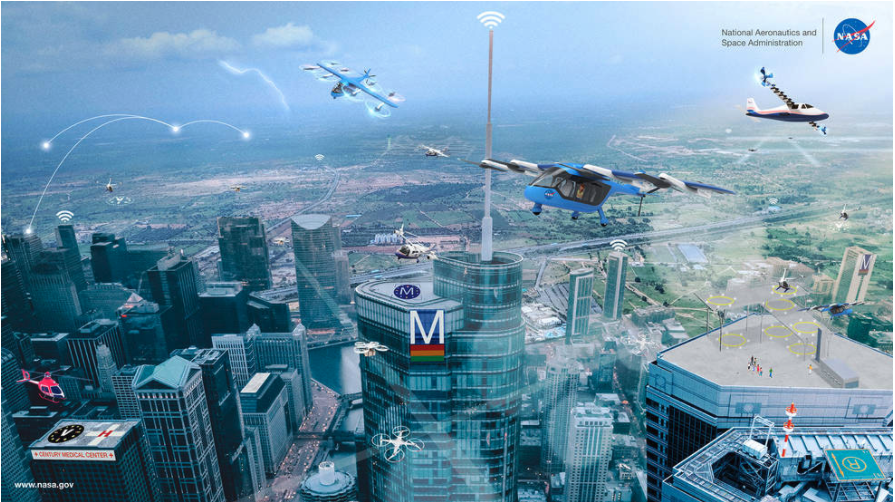NASA has adopted new terminology to define its vision for the future, replacing Urban Air Mobility (UAM) with Advanced Air Mobility AAM. But what does this actually mean for the future of NASA’s air mobility initiative? According to Davis Hackenberg, NASA’s AAM mission manager, not much:
“To be clear, in this move we’re primarily talking about updating the words we are using to describe our efforts,” explained Hackenberg.
So, what’s in a name, specifically this name? The term urban is already selective of a specific type of space—the city—but our imaginations have developed use cases for air mobility beyond the urban landscape. We now envision air mobility serving suburbs and rural, difficult to reach locations, or even flying passengers from city to city across states (intraregional). The term ‘urban’ falls short of encompassing these ideas and concepts.
So, if the term is not exactly accurate, should we adopt this new, more inclusive term when talking about air mobility, or is there still a place for UAM? Because these unmanned cargo and passenger drones will have to integrate into an already established and complex national airspace, advanced is certainly a fitting descriptor of what we hope to accomplish with air mobility. But is advanced too general a term when we are talking about specific SOPs and conditions? Afterall, rural and urban landscapes come with their own unique challenges and risk factors, and that is just one factor that goes into these different types of flights, there are still things like longevity, air traffic, and weather to consider.
NASA hasn’t exactly thrown away UAM as a term but rather is placing it under a more inclusive, broader umbrella term that can house the different types of air mobility the industry envisions—if it is advanced, it fits.
“We are still doing UAM work, but now we consider it part of a bigger picture we call Advanced Air Mobility,” stated Hackenberg. “We’re still challenging industry to come in and perform operational scenarios that would ensure UAM safety and show the public this is real and can be done. We’re just going to use a name that makes more sense.”
Providing an umbrella term for a series of different types of unmanned flights within the airspace should help the industry develop specific definitions for the kind of operations it is engaged in, and those distinctions may one day help define our regulations and the requirements for compliance. Someday we may find ourselves talking about urban, rural, intraregional, suburban air mobility and so on (UAM, RAM, IAM, and SAM) as part of the bigger AAM.
















Comments